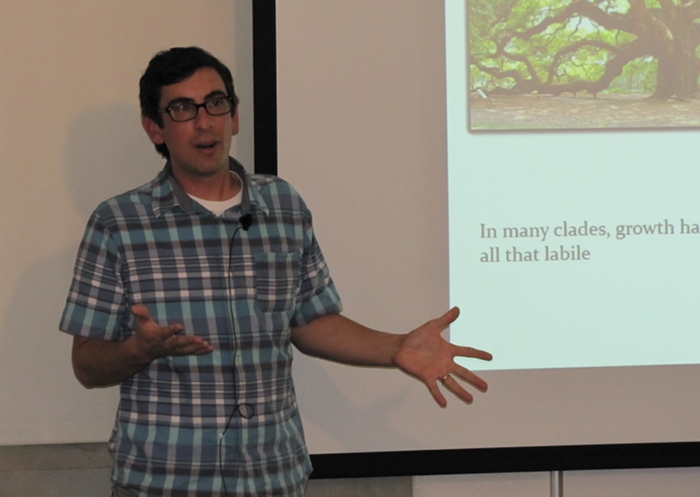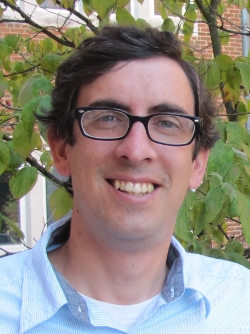NIMBioS Seminar Series
In conjunction with the interdisciplinary activities of the National Institute for Mathematical and Biological Synthesis (NIMBioS), a seminar series on topics in mathematical biology will be hosted at NIMBioS every other Tuesday at 3:30 p.m. (unless otherwise noted) in the Hallam Auditorium, Room 206, Claxton Building, 1122 Volunteer Blvd. Seminar speakers will focus on their research initiatives at the interface of mathematics and many areas of the life sciences. Light refreshments will be served in the 1st floor visitor breakroom beginning 30 minutes before each talk. Faculty and students from across the UT community are welcome to join us.
Time/Date: Tuesday, August 27, 2013, 3:30 p.m.*
Location:
Room 105, Claxton Building, 1122 Volunteer Blvd.
Speaker:
Dr. Jeremy Beaulieu, NIMBioS postdoctoral fellow
Topic:
Identifying hidden rate changes in the evolution of a binary morphological character: Examples from campanulid angiosperms
Abstract:
The growth of phylogenetic trees in scope and in size is promising from the standpoint of understanding a wide variety of evolutionary patterns and processes. With trees comprised of larger, older, and globally distributed clades, it is likely that the liability of a binary character will differ significantly among lineages, which could lead to errors in estimating transition rates and the associated inference of ancestral states. Here I develop and implement a new method for identifying different rates of evolution in a binary character along different branches of a phylogeny. Iillustrate this approach by exploring the evolution of growth habit in the Campanulidae, a flowering plant clade containing some 35,000 species. The distribution of woody versus herbaceous species calls into question the use of traditional models of binary character evolution. The recognition and accommodation of changes in the rate of growth form evolution in different lineages demonstrates, for the first time, a robust picture of growth form evolution across a very large, very old, and very widespread flowering plant clade. I will also show how these methods can easily be extended to address other key questions in comparative biology.
*Join us for refreshments at 3 p.m. in the 1st floor visitor breakroom.
Seminar Flyer (pdf)
For more information about this and other NIMBioS Seminars, visit /seminars.

NIMBioS
1122 Volunteer Blvd., Suite 106
University of Tennessee
Knoxville,
TN 37996-3410
PH: (865) 974-9334
FAX: (865) 974-9461
Contact NIMBioS



